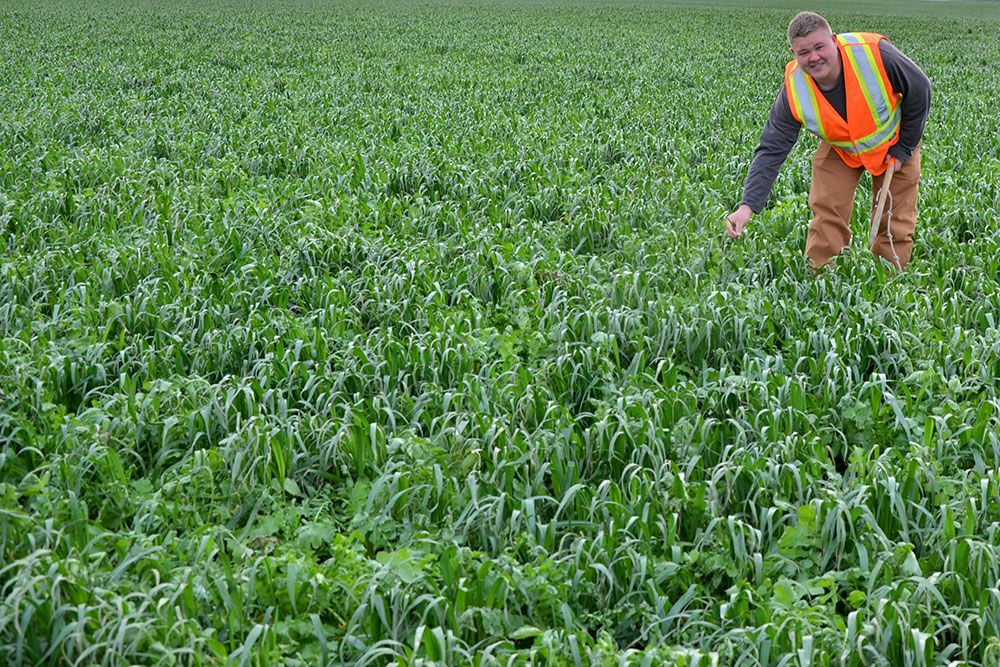Adopting cover crops in 2020

Farmers planting more cover crops in watershed in 2020
Cover crop grant programs supported record 3,000 acres of cover crops in Ausable Bayfield watersheds in 2019; in 2020, almost 4,000 acres of cover crops will be planted
The challenges of the year 2020 haven’t prevented local agricultural producers from moving forward with the adoption of beneficial cover crops. Last year, in 2019, farmers in Ausable Bayfield watersheds planted close to 3,000 acres of cover crops with the support of programs administered by Ausable Bayfield Conservation. That was a record year in the watershed.
This year, in 2020, local farmers have applied for grants for almost 4,000 acres of cover crops. That is a new record. It is also in addition to all the many thousands of acres of cover crops planted in the watershed that did not receive funding from financial incentive programs.
To find out more about the benefits of cover crops visit the cover crops web page on the abca.ca website at this link:
The use of cover crops is a practice that benefits soil health and water quality. Cover crops have many benefits to the landowner and the community, according to Ausable Bayfield Conservation. Cover crops help to protect water quality and build soil health. Cover crops help to reduce loss of nutrients and topsoil, reduce the amount and speed of water running off of land, and reduce wind speed at ground level which reduces wind and water erosion and the speed of water runoff. Those are just some of the benefits.
“We are pleased to see so many local farmers embracing cover crops and learning about them and adopting them even during a challenging year,” said Kate Monk, Manager of Stewardship, Land and Education with Ausable Bayfield Conservation. “We also appreciate the funding partners that support programs providing grants that make it possible to adopt cover crops as a best management practice. Our soil, our water, and our local residents all benefit from more year-round vegetative cover.”
The month of November is #NoTillNovember with a #KeepTheStubble campaign that encourages less tillage and informs producers they can ‘save time, save money, and save soil.’ Neil Sass is owner of a no-till farm in the United States. He is a Natural Resources Conservation Service (NRCS) Area Soil Scientist in Iowa and creator of No-Till November.
Sass has written about Six Tips for Switching to No-Till.
His six steps include:
- Start planning at least a year before implementation;
- Pick an easy entry point and crop;
- Select the right seeds;
- Set up your planter correctly;
- Plant according to soil conditions, not the calendar; and
- Seek advice and recommendations from successful no-tillers.
For more details read his article here:
PHOTO INFORMATION: The cover crop in this photo is a seven-way mix, planted by a participating local agricultural producer, within the headwaters area of the Ausable River. The cover crop is being left to over-winter to help improve local soil and water resources. Looking at the cover crop, in the photo, is Nathan Schoelier, Stewardship Technician with Ausable Bayfield Conservation. Local farmers are breaking last year's record for cover crop adoption! #NoTillNovember We thank all the local farmers planting cover crops and maintaining year-round vegetative cover to protect water quality and soil health.